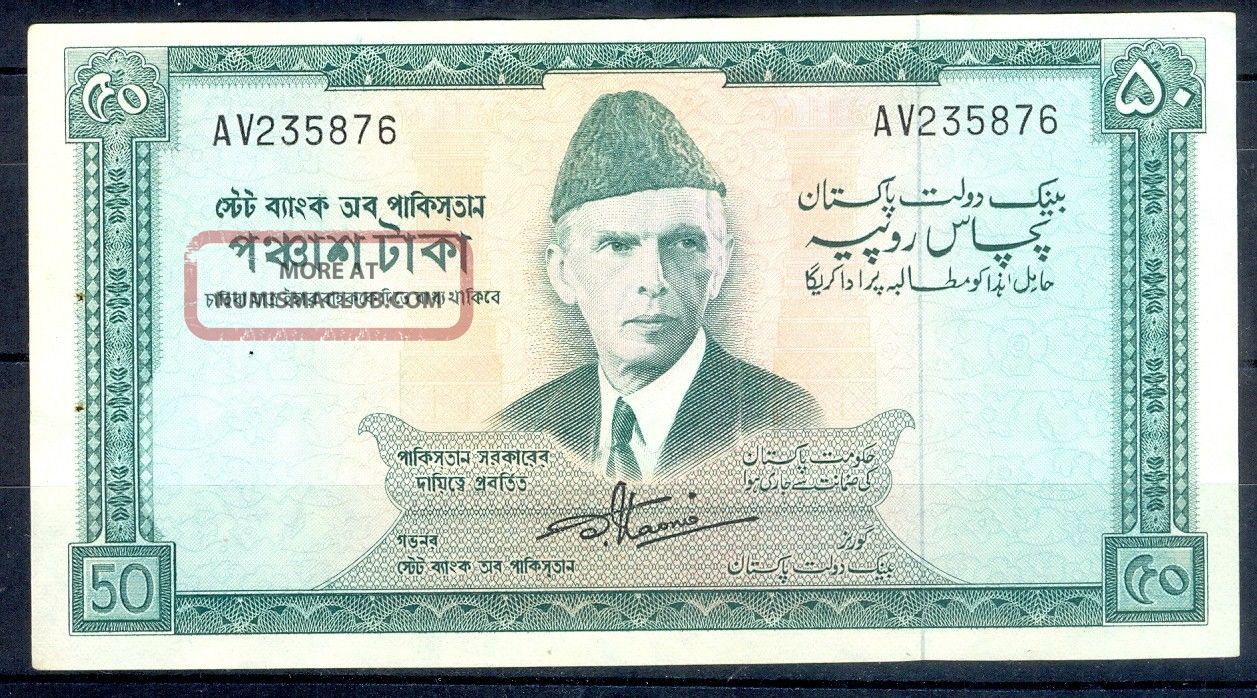
The disturbances caused a great deal of frictionīetween the governments of India and Pakistan and led to the mass exodus of many HinduĬommunities. The targets of the riots were invariably HinduĬommunities and businessmen living in Pakistan.

Of the inscribed notes were the same as their counterparts, which continued to circulate inįollowing the separation of Pakistan and India, unprecedented rioting and civilĭisturbances broke out across Pakistan. Overprinting notes of the Reserve Bank of India with the relevant inscriptions. This distinction is important, as there have been attempts to dupe collectors by Note that these inscriptions are due to modifications to the printing plates and they are not ‘GOVERNMENT OF PAKISTAN’ were inscribed in English, while at the bottom of the whiteĪrea the Urdu rendition of the same phrase appears, i.e. At the top of the white area reserved for viewing the watermark the words The modification to the Indian notes consisted of two inscriptions on the front of the To circulate in Pakistan, modified notes of the Reserve Bank of India in the denominations of 2,ĥ, 10 and 100 rupees were introduced as planned, along with modified 1-rupee notes of the So, following a seven-month period where notes of the Reserve Bank of India and the Government of India continued To be inscribed with ‘Government of Pakistan’ in Urdu and English, and placed into circulationįrom 1 April 1948 under the responsibility of the Government of Pakistan. Order also allowed for notes issued by the Reserve Bank of India and the Government of India Of India and the Government of India remaining legal tender in Pakistan until the same date. Under this order, the Reserve Bank of India was to be the common currencyĪuthority for India and Pakistan until 30 September 1948, with notes issued by the Reserve Bank Issued the ‘Pakistan (Monetary System and Reserve Bank) Order, 1947’ on 14 August 1947, theĭay before partition. Partition, emergency arrangements were put into place for the circulation of currency in Pakistan.įollowing advice from an expert committee, the Governor General of undivided India Months) between the announcement of the plan for partition and the date declared for the Punjab, Sind, Baluchistan and North-west Territories. Pakistan, created largely from East Bengal, and West Pakistan, formed predominantly from the The Muslim state of Pakistan was formed by East To come into existence on 15 August 1947.

The plan for the partition of IndiaĪnd Pakistan was announced on 3 June 1947, with the plan allowing for the separate dominions In the period prior to the declaration of independence for India. Partition became more apparent with the growing discord between the two religious communities Required to satisfy the vast communities of Muslims in the Indian sub-continent. It soon became apparent to the British that a separate state for Muslims would be Groups that had previously agitated for a Muslim state, separate from Hindu India, increased theirĪctivity. Stability that terminated in an emergency issue due to the separation of East and West Pakistan.įollowing Great Britain’s decision to grant independence to India after the Second World War,

This was followed by a period of relative The people of Pakistan with a plethora of bank notes.
#Pakistan bank note series#
However, the first three series were released within a five-year period, inundating Between 19 there were five series of bank

This study looks at the bank notes issued in Pakistan from the time of independence in 1947 toġ972, the year after the civil war between East and West Pakistan (which led to East Pakistanīecoming the new state of Bangladesh). The Bank Notes of Pakistan – 1947 to 1972


 0 kommentar(er)
0 kommentar(er)
